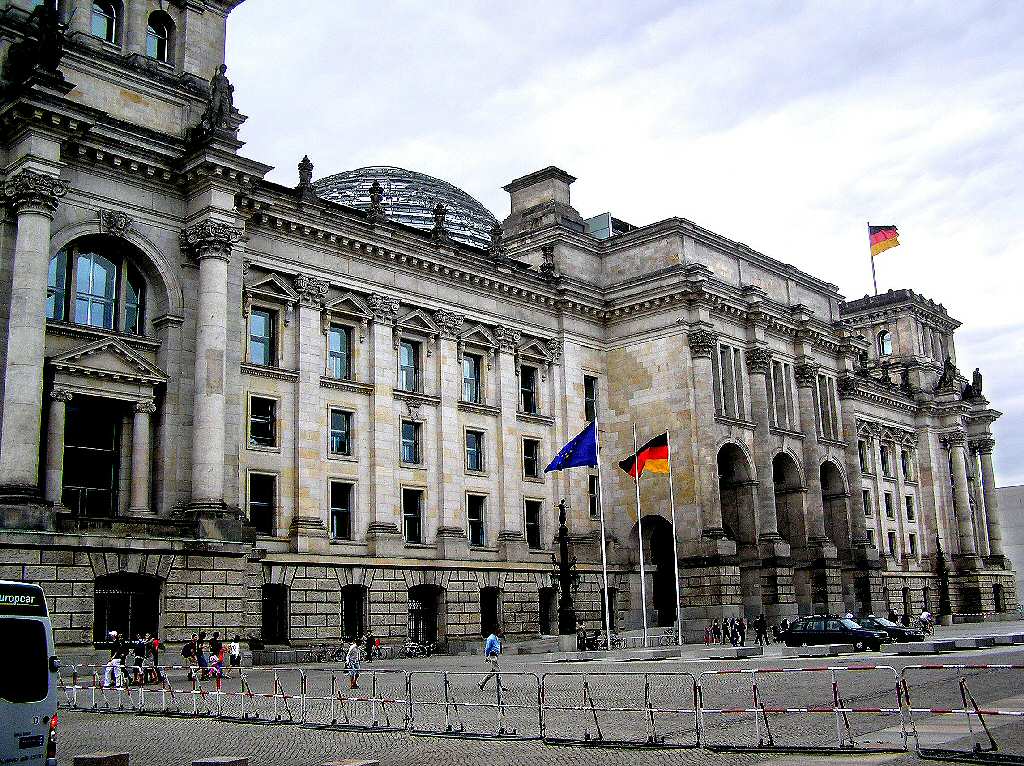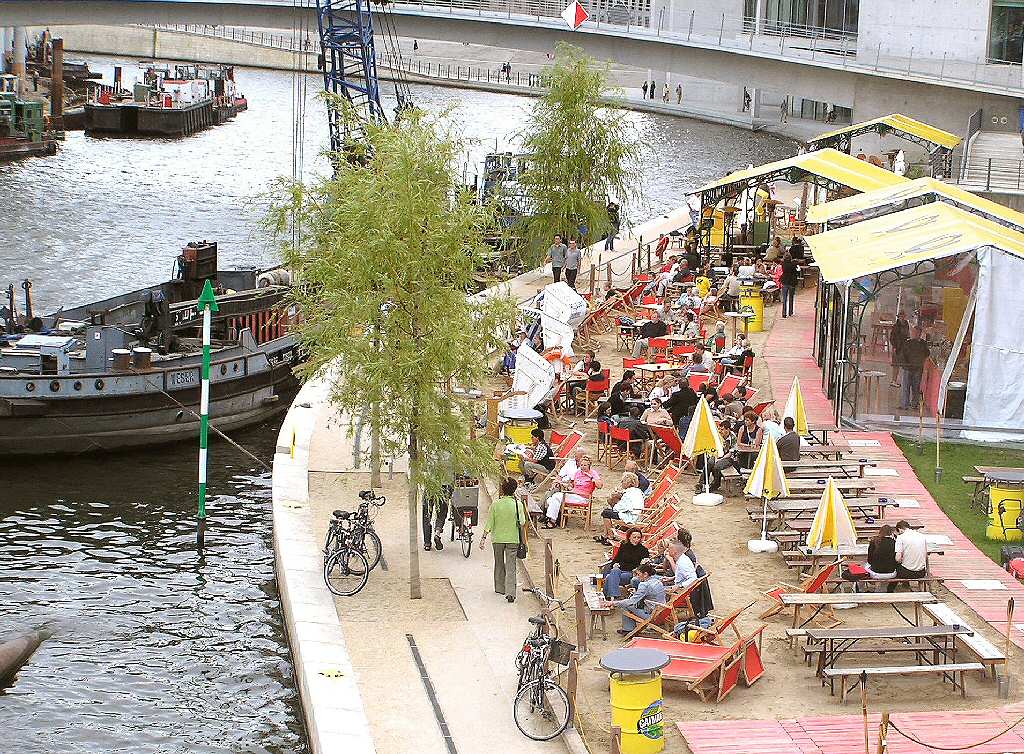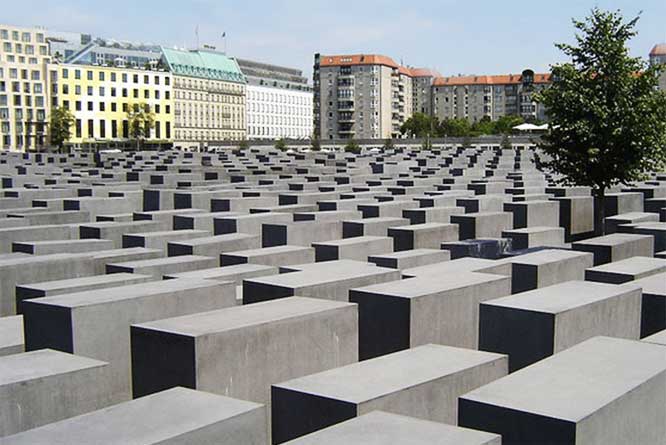The Reichstag in Berlin - Germany's Parliament
The classic 1945 black and white photograph of the Russian soldier placing the soviet flag on top of the Reichstag shows that the building had significant symbolic importance outside Germany even though the building had not been used as a Parliament since 1933 when a fire had gutted the inside. The Nazi regime did not use it fully as it had not been rebuilt.

Strangely the contract for rebuilding the German Parliament was awarded to Sir Norman Fowler, a British Architect. It was a good choice as the finished building is impressive. He created a glass dome which lights up at night. Members of the Public can climb up to the dome and walk around it looking down onto the German parliament in session below. It symbolizes that Parliament is never above the people and that the workings of the new post reunification German Government is transparent.
There' s a great roof-terrace on top of the building from which you have an amazing view on the city. The view out of the 23 m high cupola is even better - inside you go up by one of 8 ramps, each of them exactly 230 m long. Built in 1894 as the parliament for the German republic, the Reichstag is once again the seat of government for a unified Germany, after the government of the country was split between Bonn and East Berlin for four decades.

The building was set in the enormous and peaceful grounds of the Tiergarten (animal garden). In 1933 Hitler used the Burning of the Reichstag as a pretext for seizing power. A good tip is to get there very early and to come back in the evening when you don't have to queue for hours. It is open until 10 pm and you can stay on the top until 1 am every day. It is free. There is a security check before you are allowed to the elevator. At the inner Dome, there's also small cafe for snacks and light drink.

In the Summer part of the Berlin river bank is turned into a seaside beach

WW2 Jewish Memorial in Berlin to all the murdered Jews
Travel books

